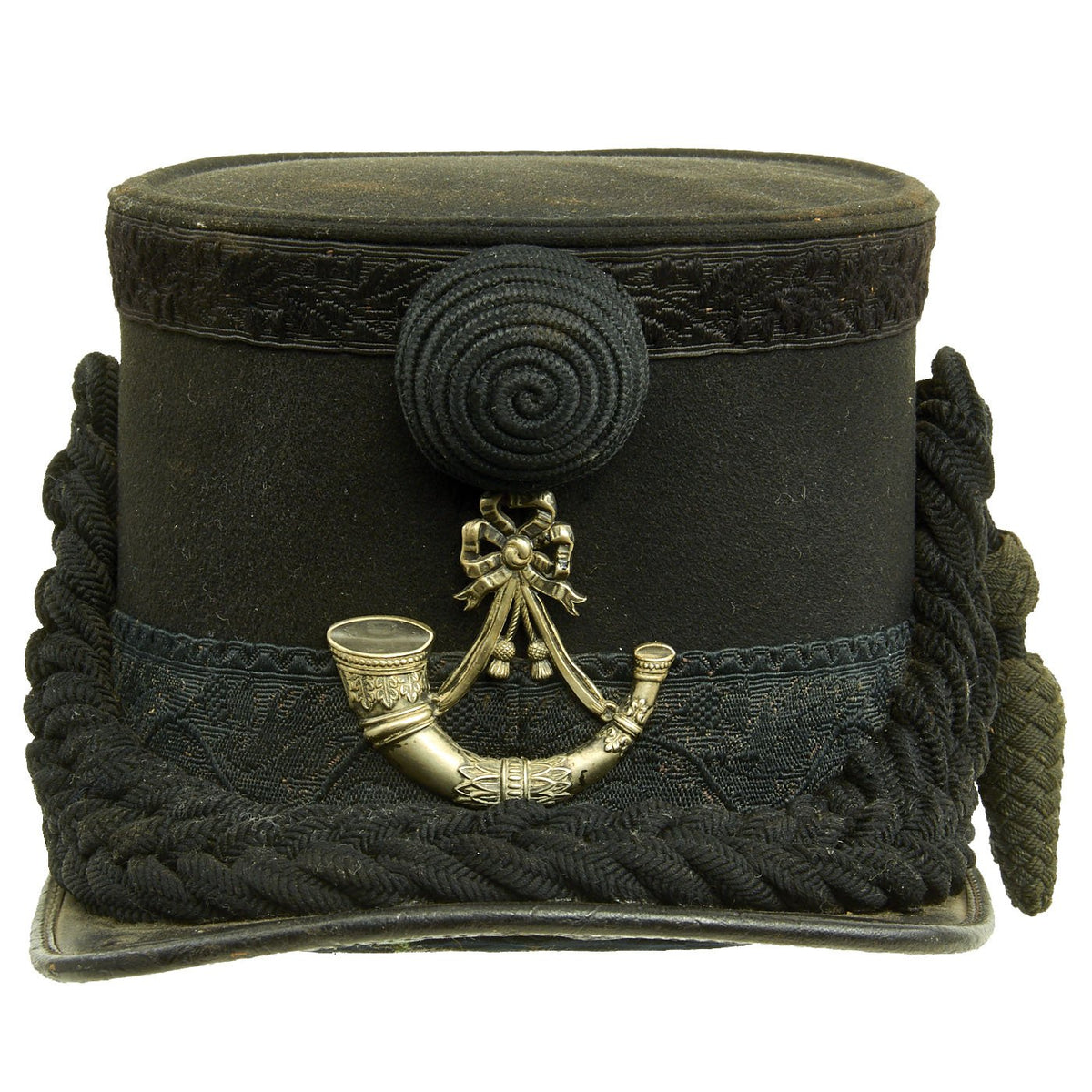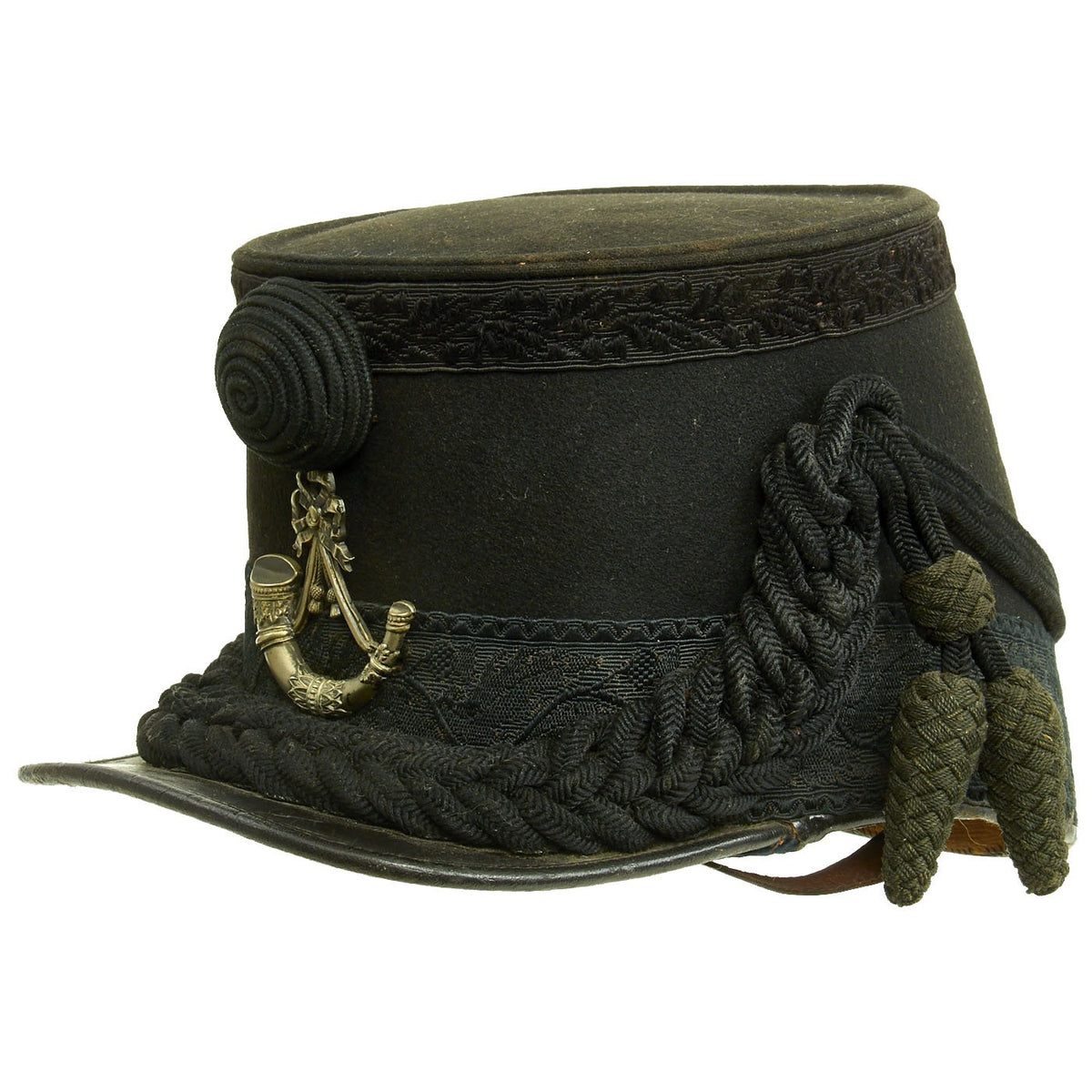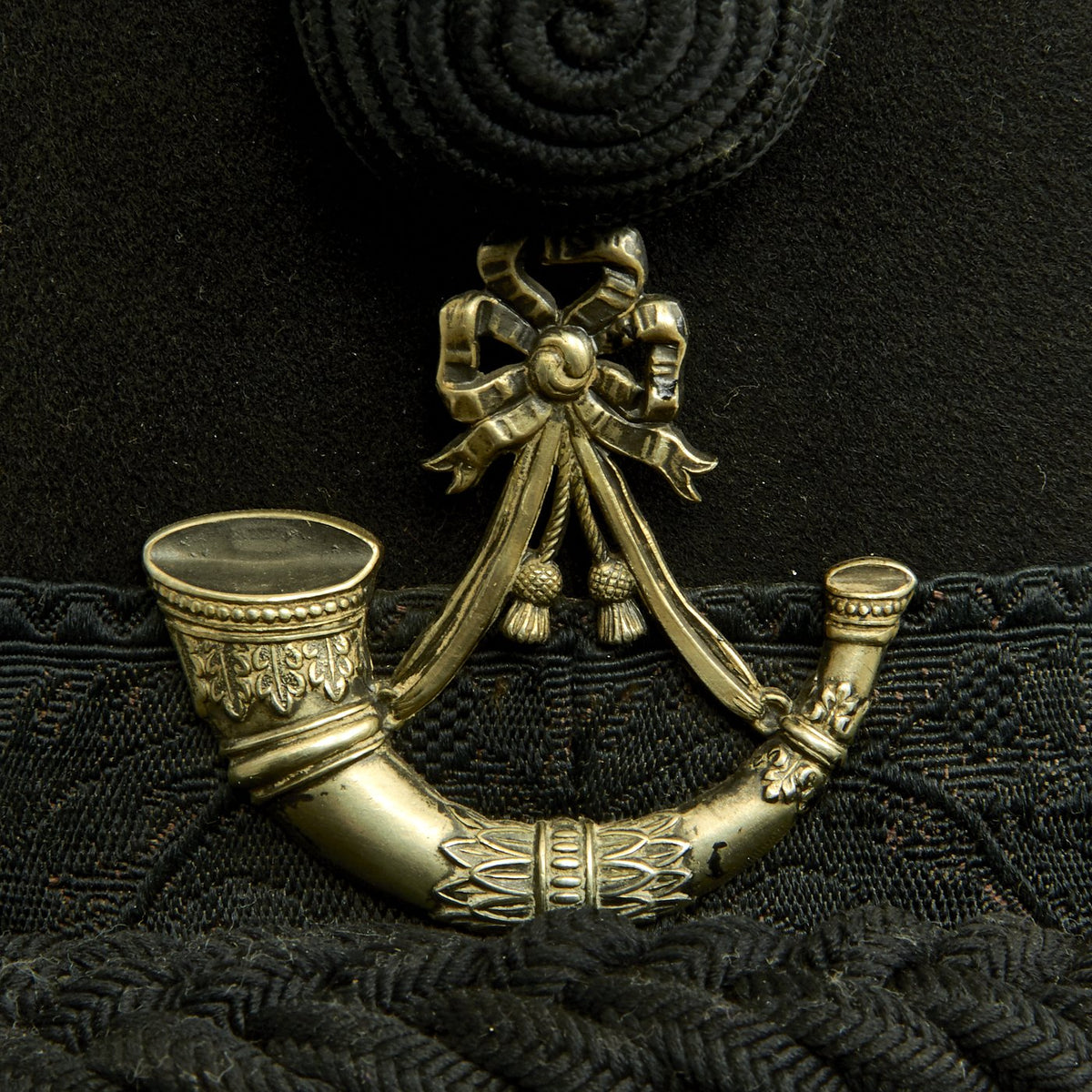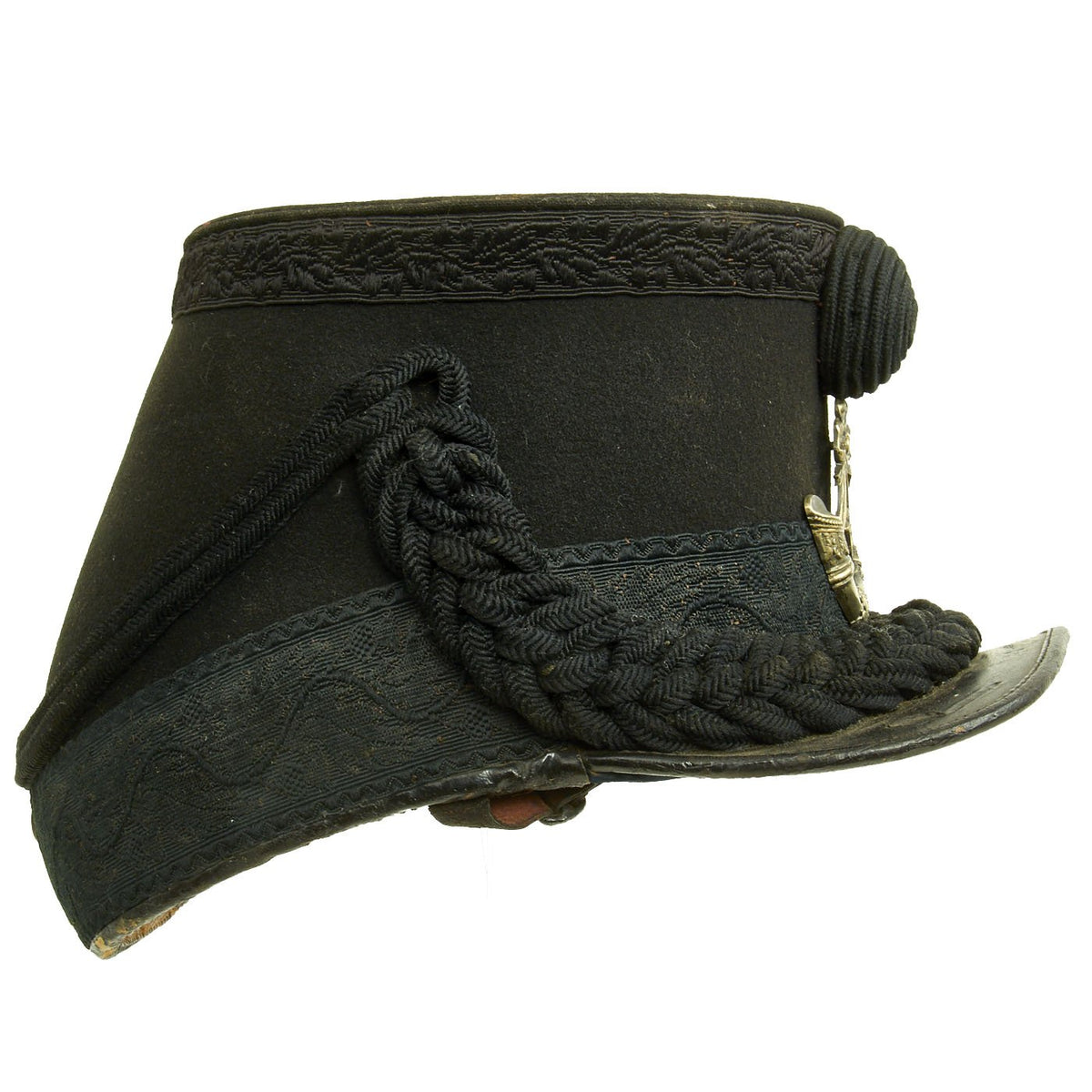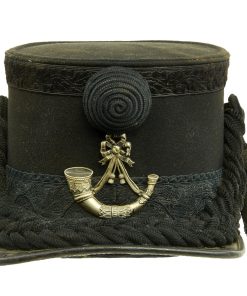Original British Late Victorian Rifle Regiment Tschako by F.W. Flight – named to E.L. Ferry Original Items
$ 495,00 $ 148,50
Original Item; Only One Available. Here we have a lovely Victorian Rifle Regiment or Light Infantry Tschako, named to a specific soldier. This this appears to be the 1880 pattern, put into service late during Queen Victoria’s long reign. It has a lovely plaited cord on the front, with lovely designs woven into the band for the top and bottom. It has the typical square shaped visor, and an intact, though delicate, chin strap.
The front of the helmet has the “Hunting Horn” device hanging from a 3 loop knot, the standard insignia of a Rifle Regiment or “Light Infantry” in the British armed forces. As there is no cockade on top or star mounted to the front cockade, there is no way to tell which precise regiment or battalion this was issued to.
The interior is lined with lovely burgundy striped satin material, which has the maker information under a coat of arms in gold print on the top:
F.W. FLIGHT
Army Tailor
LONDON, 4 New Burlington St.
WInchester, 90, HIGH St.
Aldershot, 20, HIGH ST.
WOOLWICH, 48, The Common.
The leather sweatband inside is in good shape, with a lovely light tan color, and a red drawstring still intact. It is marked with the name E. L. FERRY on the left side.
Overall this Rifle Regiment Tschako really is in great shape, especially considering the age. Many of these have the black braids turn yellow/gold over time, and loose their front cockade, not just the top one. Very nice and ready to display!
History of the shako-
The word shako originated from the Hungarian name csákós süveg (“peaked cap”), which was a part of the uniform of the Hungarian hussar of the 18th century. Other spellings include chako, czako, schako and tschako.
From 1800 on the shako became a common military headdress, worn by the majority of regiments in the armies of Europe and the Americas. Replacing in most instances the light bicorne, the shako was initially considered an improvement. Made of heavy felt and leather, it retained its shape and provided some protection for the soldier’s skull, while its visor shaded his eyes. The shako retained this pre-eminence until the mid-19th century, when spiked helmets began to appear in the armies of the various German States, and the more practical kepi replaced it for all but parade wear in the French Army. The Imperial Russian Army substituted a spiked helmet for the shako in 1844-45 but returned to the latter headdress in 1855, before adopting a form of kepi in 1864. Following the Franco-Prussian War of 1870, military fashions changed and cloth or leather helmets based on the German headdress began to supersede the shako in many armies.
Although the mid-nineteenth century shako was impressive in appearance and added to the height of the wearer, it was also heavy and by itself provided little protection against bad weather as most models were made of cloth or felt material over a leather body and peak. Many armies countered this by utilizing specially designed oilskin covers to protect the shako and the wearer from heavy rain while on campaign. The shako provided little protection from enemy action as the most it could offer was in giving partial shielding of the skull from enemy cavalry sabres
Fast Shipping with Professional Packaging
Thanks to our longstanding association with UPS FedEx DHL, and other major international carriers, we are able to provide a range of shipping options. Our warehouse staff is expertly trained and will wrap your products according to our exact and precise specifications. Prior to shipping, your goods will be thoroughly examined and securely secured. We ship to thousands clients each day across multiple countries. This shows how we're dedicated to be the largest retailer on the internet. Warehouses and distribution centres can be located throughout Europe as well as the USA.
Note: Orders with more than one item will be assigned a processing date depending on the item.
Before shipping before shipping, we'll conduct a thorough inspection of the items you have ordered. Today, the majority of orders will be delivered within 48 hours. The delivery time will be between 3-7 days.
Returns
The stock is dynamic and we cannot completely manage it because multiple stakeholders are involved, including our factory and warehouse. So the actual stock may alter at any time. It's possible that you may not receive your order once the order has been made.
Our policy is valid for a period of 30 days. If you don't receive the product within 30 days, we are not able to issue a refund or an exchange.
You can only return an item if it is unused and in the same state as the day you received it. You must have the item in its original packaging.
Related products
Uncategorized
Uncategorized
Uncategorized
Uncategorized
Uncategorized
Armored Burgonet Helmet & Polearm from Scottish Castle Leith Hall Circa 1700 Original Items
Uncategorized
Uncategorized
Band of Brothers ORIGINAL GERMAN WWII Le. F.H. 18 10.5cm ARTILLERY PIECE Original Items
Uncategorized
Uncategorized
Uncategorized
Uncategorized
Australian WWII Owen MK1 Machine Carbine SMG Custom Fabricated Replica with Sling Original Items
Uncategorized
Uncategorized
Uncategorized
Uncategorized
Uncategorized
Uncategorized
